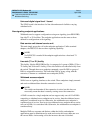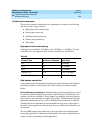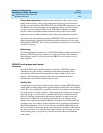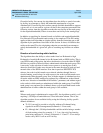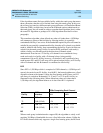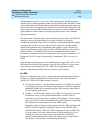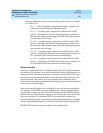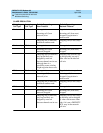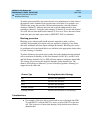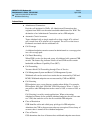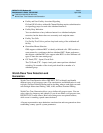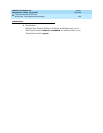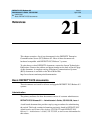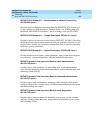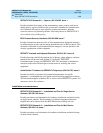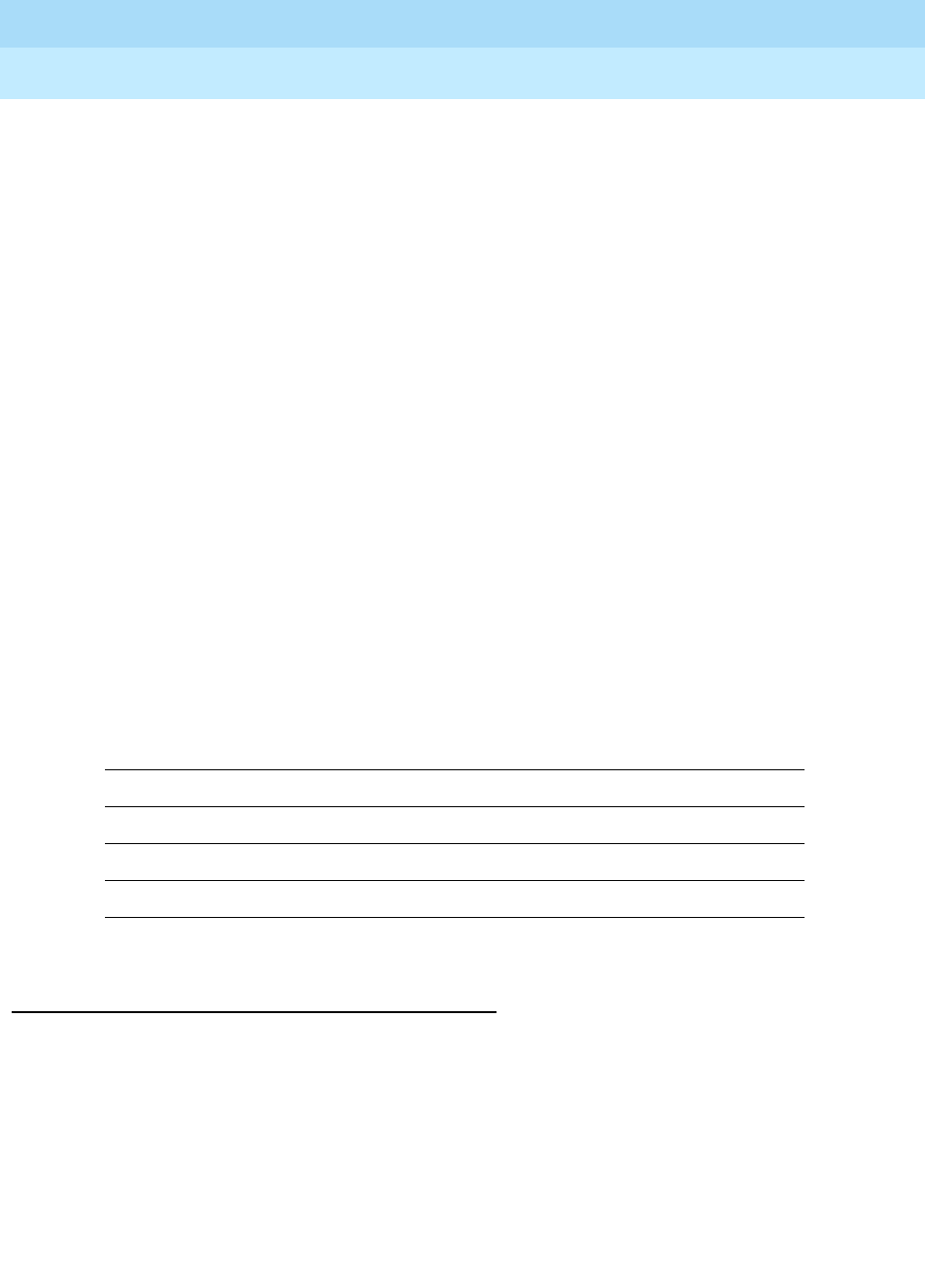
DEFINITY ECS Release 8.2
Administrator’s Guide
555-233-506
Issue 1
April 2000
Features and technical reference
1599Wideband Switching
20
To reduce glare probability, the network needs to be administered so both sides of
the interface select channels from opposite ends of facilities. For example, on a
23B+D trunk group, the user side could be administered to select B-channels
starting at channel 23 while the network side would be administered to start
selecting at channel 1. Using the same example, if channel 22 is active but channel
23 is idle, the user side should select channel 23 for re-use. This is known as linear
trunk hunt and is the hunt option used by DEFINITY ECS for wideband.
Blocking prevention
Blocking occurs when insufficient B-channels required to make a call are
available. Narrowband calls require only one channel so blocking is less likely
than with wideband calls that require multiple B-channels. Blocking also occurs
for wideband calls when bandwidth is not available in the appropriate format (that
is, fixed, floating, or flexible).
To reduce blocking, the switch selects trunks for both wideband and narrowband
calls to maximize availability of idle fixed channels for H0, H11, and H12 calls
and idle floating channels for N x DS0 calls that require a contiguous bandwidth.
The strategy for preserving idle channels depends on the channel type. The
chances for blocking are reduced if you use a flexible algorithm, assuming it is
supported on the other end.
Considerations
■ For example, if the user side is provisioned to start at the high side (DS0
23) and DS0 22 is idle but DS0 23 is active, reselect DS0 22 for the next
call. This is known as linear trunk hunting. Only the direction of hunt is
administrable.
Channel Type Blocking Minimization Strategy
H0 Preserve idle quadrants
H11 Preserve idle facilities
H12 Preserve idle facilities
Flexible NxDS0 Preserve idle facilities
Floating NxDS0 Preserve idle facilities as first priority



